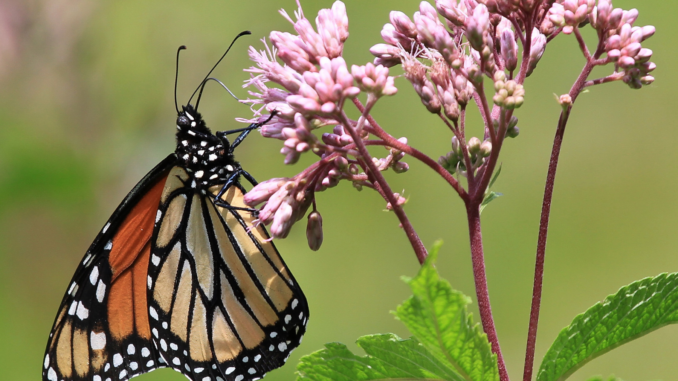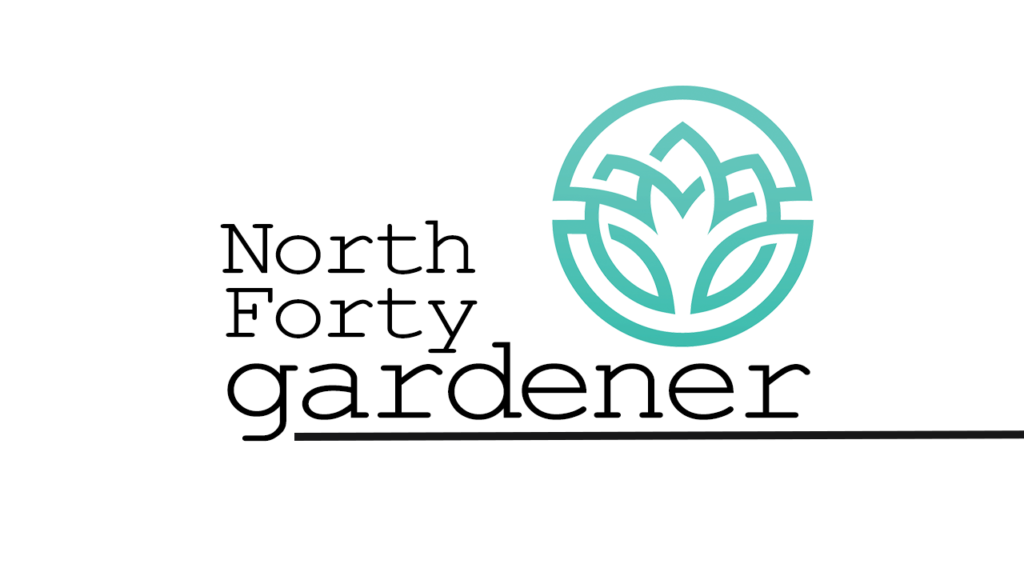

by Kelly Kellow, Horticulturist, Gardens on Spring Creek
One of the best sights to see in the springtime are active honeybees buzzing around, hopping from flower to flower, and collecting pollen for their upcoming broods. It means that summer is coming, and the bountiful smells and brilliant colors of perennials await. Even the most novice gardener can help create foraging and nesting sites for many pollinators by selecting plants that butterflies and moths, beetles, and even flies love. When selecting the elements of your garden, it’s best to include plants of varying shapes, sizes, and species to cater to all pollinators.
Perennials are one of the more important plants to integrate into your garden to provide an ongoing source of food for pollinators. Sea holly (Eryngium planum ‘Blue Cap’) is a perennial that provides bountiful flowers for a long bloom season. Sea holly has open umbels of prickly steel blue flowers that can reach 36 inches in height. A very hardy species with a Hardiness Zone of 4-9, it’s perfect for Northern Colorado gardens in that it tolerates hot, dry sites and poor soils, even those high in salts.
If you have areas that are rich and moist, Joe Pye weed (Eupatorium maculatum) and swamp milkweed (Asclepias incarnata) are also great selections. As Colorado native plants, both create a naturalistic look to any garden. Joe Pye weed can grow up to six feet tall with strong stems that hold crowned clusters of the bright pink flowers in late summer and are magnets for dozens of species of butterflies. Swamp milkweed grows upright about two to three feet with slender, willow-like leaves topped with round, pink-to-rose-colored flower clusters. This perennial variety is known to attract many native butterflies and bees and is important in feeding Monarch caterpillars.
Annuals and herbs are season extenders for many gardens and can be planted among perennials and in containers. When selecting annuals to attract pollinators, consider sweet alyssum, torch tithonia (also called Mexican sunflowers), zinnia, Verbena bonariensis, and cleome. These annuals perform best in full sun and well-drained soil.
Herbs are not only great culinarily plants, but their long-lasting flowers provide a great food source for pollinators. Add sage, different types of mint, oregano, and dill into a perennial herb garden. Dill is great for pickles and is also a food source for swallowtail caterpillars. Basil, lemon verbena, and pineapple sage are tender annual herbs that provide long bloom times and abundant flowers for extended foraging periods. While these species will overwinter, they could be dug up and brought inside for winter color and flavor.
There are many more annuals, herbs, and perennials that pollinators love – especially those with bright flowers. By working intentionally to incorporate these into your garden, you will create a long season of blooms for pollinators of all kinds.
Support Northern Colorado Journalism
Show your support for North Forty News by helping us produce more content. It's a kind and simple gesture that will help us continue to bring more content to you.
BONUS - Donors get a link in their receipt to sign up for our once-per-week instant text messaging alert. Get your e-copy of North Forty News the moment it is released!
Click to Donate
